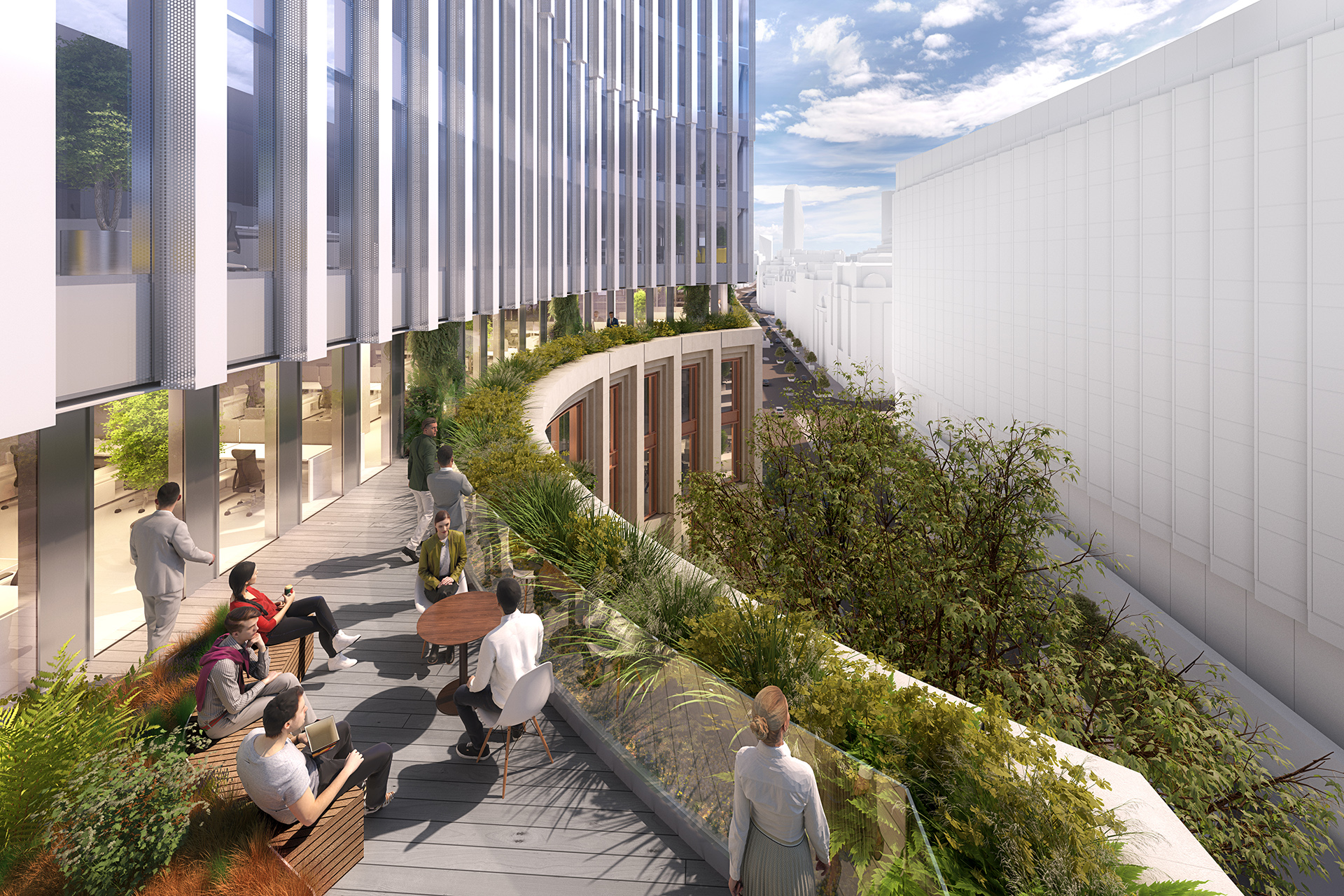
Holborn Viaduct
London, UK
Holborn Viaduct
London, UK
Holborn Viaduct
London, UK
PLP Architecture’s consented proposals for a new thirteen storey office building in London will deliver a sustainable, adaptable, and healthy new workplace environment on a prominent site, located at the intersection of Holborn Viaduct and Farringdon Street. At the heart of the design approach is the understanding that human comfort and wellbeing are paramount to creating sustainable environments that enhance people’s health, foster creativity and spark innovation.
All tenants will have access to adaptable, modern workplace environments, including biodiverse green terraces to promote outdoor working. Communal and social spaces are interwoven into the lower floors and central atrium, with interconnecting staircases designed to promote movement and bring people together. The building incorporates facilities for fitness, cycling and active commuting with a dedicated Wellness Wing entrance at street level adjacent to Cycleway no. 6.
The architectural language is a response to the building’s context and is shaped to enhance the setting of the listed south-eastern gatehouse – one of four which frame the Holborn Viaduct bridge. Portland Stone, reused from the existing buildings, will form a new masonry base on Farringdon Street and weave the gatehouse back into the streetscape. Crafted perforated vertical fins on the upper levels of the building act as a quieter foil to the listed gatehouse, forming a clear juxtaposition of the historical gatehouse and the contemporary development in the background. The massing and façade articulation have been informed by passive design principles; the façade depth and details minimise solar gain, maximise daylight and provide natural ventilation.
Client
Royal London Asset Management Limited
Facility
Offices
Size
34,300sqm
Status
In Construction

The proposal will deliver transformative public realm improvements around the site. Two new high-quality public spaces will be created on Holborn Viaduct and Farringdon Street, connected by a new public lift to provide accessibility across the nine-meter height difference between the two streets. Two existing mature plane trees sit at the heart of the new public realm and inform the introduction of meaningful and accessible urban greening. Ground floor frontages on both streets are activated by building entrances, internal amenities and a series of large-scale digital public art screens that will serve as a platform for cultural engagement and community learning.
Set to achieve BREEAM Outstanding and Well Platinum accreditation, the building will reduce embodied and operational carbon. Long-term adaptability and disassembly will be accomplished through the adoption of a layered design and installation approach to building components, allowing individual elements to be adapted and replaced in response to changing climate and future occupational requirements.




Related Projects
Related Projects

